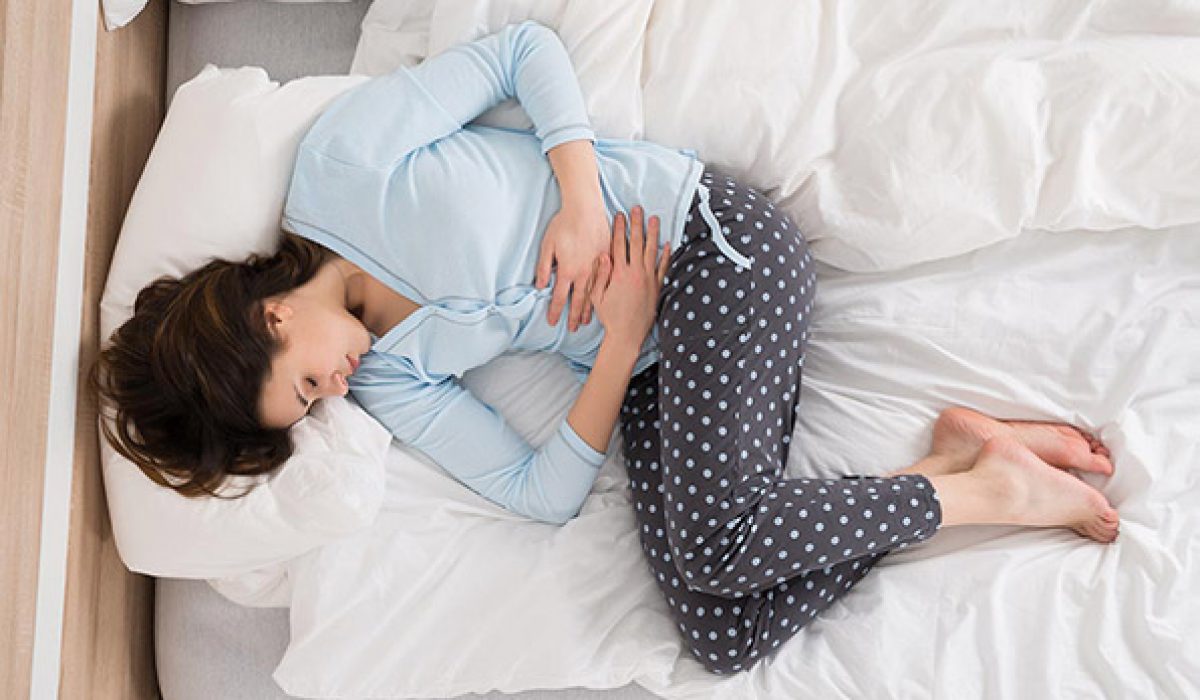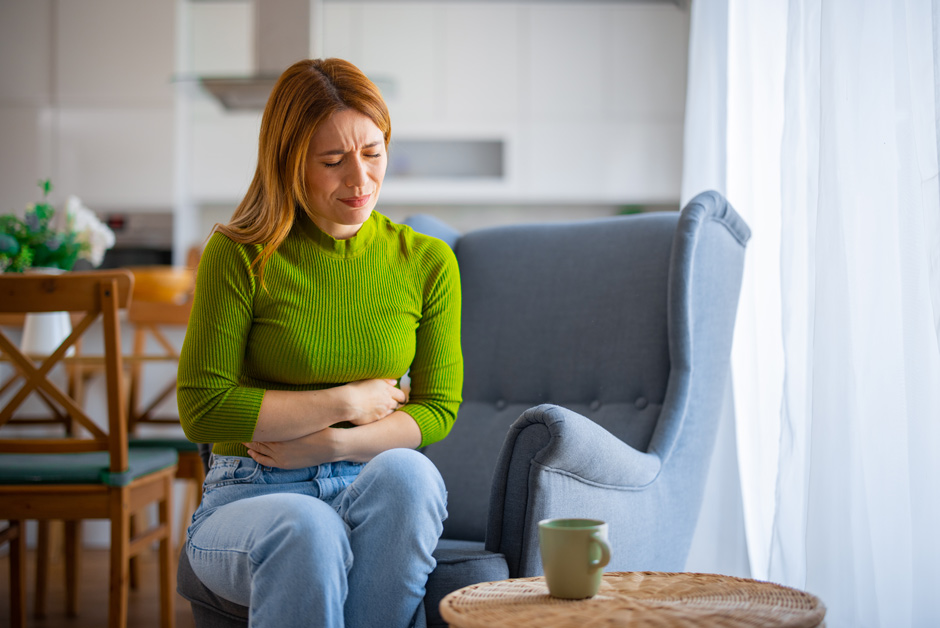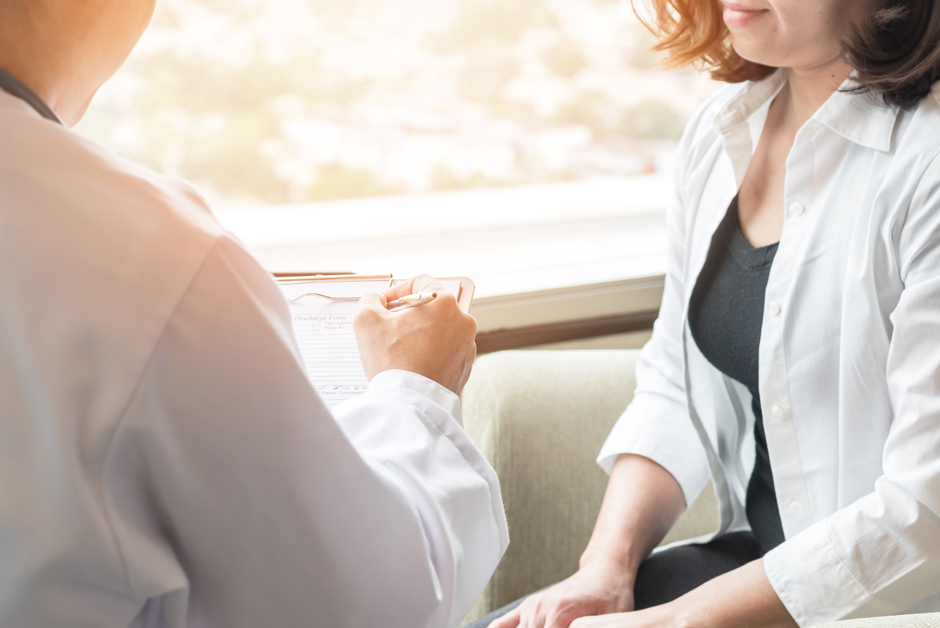What Is Endometriosis?
There are around 200 different types of cells within the human body, each designed to perform their own jobs. The cells lining your uterus are designed to build up every month in preparation for egg fertilisation, and break down when your eggs have not been fertilised by sperm. This is why you bleed during a menstrual cycle.
However, endometriosis is a condition where those same cells appear in other parts of the body, often around the uterus, ovaries and fallopian tubes. Even though these cells are outside the uterus, they still perform the same job. This means that they build up and break down during a menstrual cycle. But unlike cells inside the uterus, the blood produced when these cells break down has nowhere to escape, leaving you with painful or heavy periods.
What Causes Endometriosis?
There is no confirmed cause of endometriosis yet. However, there are several theories. For example:
- Metaplasia – this is when a cell changes from one type into another. This is normal for certain types of cells, for example when cartilage turns into bone. However, scientists have proposed that cells in an embryo may morph into endometrial cells whilst the baby’s uterus is first forming.
- Retrograde Menstruation – most women will experience a ‘backing up’ of the tissue discarded from the uterus during a period. This is known as retrograde menstruation. Usually, the body is able to clear out this tissue, but it has been suggested that in some cases it attaches itself to the organs and grows, causing endometriosis.
- Immune Dysfunction – there is a connection between endometriosis and a weakened immune system. However, it is unknown as to whether a weak immune system is the cause or effect of the disease.
How Is Endometriosis Different To Period Pain?
Normal period pain can range from non-existent or very mild to severely painful, and can even cause diarrhoea, vomiting and fainting in particularly bad cases. When the muscular wall of the uterus contracts in order to help discard the built-up tissue, it briefly cuts off blood and oxygen supplies to the womb, causing cells in the womb to release pain-triggering chemicals.
This is different to endometriosis, as endometriosis is a chronic condition which can cause damage to internal organs and endanger fertility. However, if you feel that you are experiencing particularly bad pain during a period, or for a sustained amount of time, it is recommended that you see your doctor or gynaecologist.
How Many People Are Affected By Endometriosis?
Endometriosis affects as many as 1 in 10 women in the UK1, and 176 million women worldwide. Celebrities who have revealed that they have endometriosis include country singer Dolly Parton, who after being diagnosed discovered that she could not have children due to the condition, and former Spice Girl Emma Bunton, who was told she had a 50% chance of a successful pregnancy before going on to have two children.
Endometriosis is the second most common gynaecological condition in the UK2. Despite this, Endometriosis UK reported that, on average, it takes 7.5 years from the onset of symptoms to receive a diagnosis3. This is because the symptoms of endometriosis can be very similar to other common conditions.
What Are The Symptoms Of Endometriosis?
Different women can experience different symptoms depending on the severity of their endometriosis. Some common symptoms include painful and heavy bleeding during a period, pain associated with sex, infertility, tiredness and painful bowel movements.
Other symptoms can include pain elsewhere in the body such as the back and legs, depression, and blood or pain when passing urine.
How Can I Get Treated For Endometriosis?
If you have any of the above symptoms, it’s important that you book an appointment with a doctor or gynaecologist to get a diagnosis.
There are a number ways to diagnose endometriosis, including a full and thorough medical history check to find any indication of previous conditions linked to endometriosis. Your medical professional can also perform a pelvic examination which may help to identify ovarian cysts, abnormal nodules or internal scarring around the uterus. The most effective method of diagnosing endometriosis is by laparoscopy (keyhole surgery); this involves a small telescope being inserted through an incision in the abdomen to examine the internal tissue.
Dr Alex Eskander, Consultant Gynaecologist here at The Gynae Centre, explains: “Unfortunately, there is no cure for endometriosis at this time. However, there are treatments available which can help to alleviate the symptoms. Surgical treatment includes removal of endometriotic nodules and affected tissue, surgery to ‘unstick’ the endometriosis cells, or remove parts of the reproductive system or the entire uterus. Hormonal treatment includes being on contraceptive pills (particularly Progesterone only pills), reducing the amount of oestrogen in the body (as endometriosis grows when exposed to oestrogen); and pain relief such as heat application, painkillers and modifiers, or physiotherapy.”
Endometriosis Awareness Week
Endometriosis Awareness Week is an annual event organised by Endometriosis UK to raise awareness of endometriosis. Their aim is to shorten the average diagnosis time of 7.5 years, and encourage women who are experiencing symptoms of the condition to get diagnosed.
The Gynae Centre is London’s finest private women’s healthcare clinic, providing leading-edge treatments across the spectrum of gynaecological issues. If you are concerned you are experiencing the symptoms of endometriosis, simply call the clinic on 020 7580 8090 to book an appointment.
REFERENCES:
Rogers PA, D’Hooghe TM, Fazleabas A, et al. Priorities for endometriosis research: recommendations from an international consensus workshop. Reprod Sci 2009;16(4):335-46.
General information about Endometriosis. Accessed February 2014.
https://www.endometriosis-uk.org/endometriosis-facts-and-figures#5






